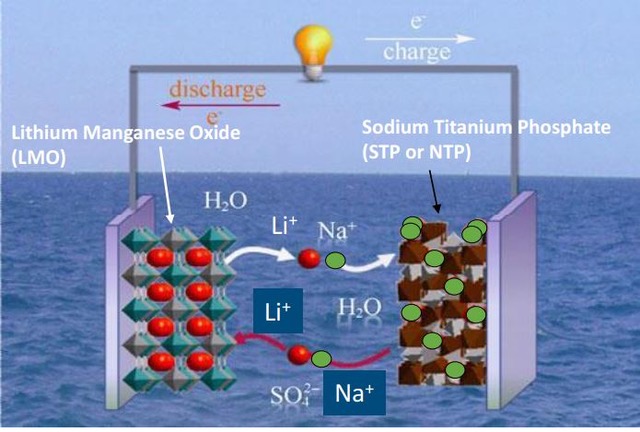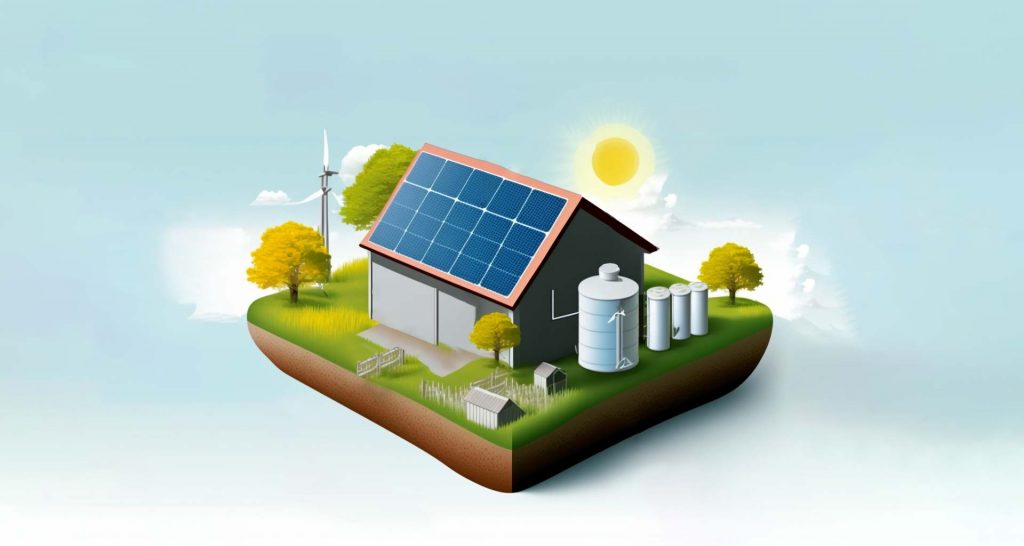Aqueous Sodium-ion Batteries: A Pioneering Technology for the Energy Transition and Its Opportunities
Table of Contents
- Aqueous Sodium-ion Batteries: A Pioneering Technology for the Energy Transition and Its Opportunities
- Background of the Energy Transition
- Aqueous Sodium-Ion Batteries: The Technology in Detail
- Applications for Sodium-Ion Batteries
- Participation Opportunities in the Austrian Sodium-Ion Battery Project
- The future of aqueous sodium-ion battery technology and its contribution to the energy transition
Background of the Energy Transition
The energy transition is a global movement aimed at shifting energy generation from fossil fuels to more sustainable, renewable sources. Climate change and the need to reduce environmental impact have intensified the urgency of this transformation. Governments, businesses, and individuals worldwide are committed to transitioning to renewable energy and promoting energy efficiency to reduce greenhouse gas emissions and create a sustainable future for generations to come.
Significance of Energy Storage Technologies for the Success of the Energy Transition
Energy storage technologies play a crucial role in the successful implementation of the energy transition. They enable more efficient use of renewable energy sources, which are often intermittent, by storing excess energy and releasing it when needed. The development of powerful and environmentally friendly storage technologies is therefore central to harnessing the full potential of renewable energy and ensuring a stable energy supply.
Aqueous Sodium-Ion Batteries: The Technology in Detail
Sodium-ion batteries are an emerging energy storage technology, characterized by their environmentally friendly properties and diverse applications. In the following, we explain the functioning of this technology, demonstrate its differences from conventional NiCd batteries, and highlight the advantages offered by sodium-ion batteries.
Functionality and Differences from Conventional NiCd Batteries
The sodium-ion batteries operate on a similar fundamental principle as lithium-ion batteries, with sodium ions taking the place of lithium ions as charge carriers. The base materials are more economical and resource-efficient compared to conventional lithium batteries, as they do not use rare earth elements and the raw materials are fully recyclable. The aqueous sodium-ion batteries are characterized by their absolute absence of pollutants and exceptional fire and explosion safety.
Advantages of Aqueous Sodium-Ion Technology
- Environmental Compatibility: Since sodium-ion batteries do not contain toxic chemicals and have low environmental impacts during manufacturing and disposal, they are a more eco-friendly option compared to NiCd batteries.
- Ease of Maintenance: Sodium-ion batteries are largely maintenance-free, minimizing operating costs and extending the lifespan of storage systems. In contrast, NiCd batteries require regular maintenance and can cause environmental damage if handled improperly.
- Versatile Applications: Aqueous Sodium-ion technology is suitable for a wide range of applications, from home storage to large-scale energy storage systems. This flexibility allows for the technology to be implemented across various sectors, thus contributing to the successful implementation of the energy transition.
Overall, aqueous sodium-ion batteries offer a promising and environmentally friendly alternative to conventional NiCd batteries. With their diverse applicability and numerous advantages, they can make a significant contribution to the energy transition and the expansion of renewable energy.

Applications for Sodium-Ion Batteries
Due to their advantages and flexibility, sodium-ion batteries offer a wide range of applications across various sectors. Below are some of the primary areas of application:
Home Storage
Aqueous Sodium-ion batteries can be used as home storage systems to store excess energy from solar panels or other renewable energy sources. They enable efficient utilization of generated energy and can help stabilize the power grid by providing energy during times of high demand.
Agriculture
In agriculture, aqueous sodium-ion batteries can help meet the energy needs of agricultural operations by storing energy from renewable sources and releasing it as needed. This can lead to agricultural businesses becoming more independent of fossil fuels and reducing their operating costs.
SMEs and Regional Associations
Small and medium-sized enterprises (SMEs) and regional associations can use aqueous sodium-ion batteries to reduce their energy costs and improve their environmental footprint. The technology allows them to use renewable energy more efficiently and decrease their reliance on conventional energy sources.
Energy Companies
Energy companies can use aqueous sodium-ion batteries as part of their energy storage solutions to stabilize the power grid and facilitate the integration of renewable energy. The technology can help reduce grid stress and increase supply reliability.
Housing Industry
In the housing sector, aqueous sodium-ion batteries can be used for decentralized energy storage in residential buildings. This allows for more efficient use of renewable energy, reduces grid stress, and provides residents with an environmentally friendly and cost-effective energy supply.
The versatile applications of aqueous sodium-ion batteries demonstrate that this technology has the potential to make a significant contribution to the energy transition and promote the use of renewable energy across various sectors.
Participation Opportunities in the Austrian Sodium-Ion Battery Project
The Austrian company that has developed the aqueous sodium-ion battery technology to production-readiness offers interested partners the opportunity to participate in this forward-looking project. In this section, the advantages of participation and the steps to become a partner are explained.
Why Participation is Attractive for Businesses and Investors
Participating in the sodium-ion battery project offers numerous benefits for businesses and investors:
- Access to an innovative and environmentally friendly technology that has the potential to significantly support the energy transition.
- Participation in a growing market with great future potential, as the demand for efficient and sustainable energy storage systems increases.
- Diversification of the portfolio by participating in a promising technology project.
- Opportunity to reduce dependence on imported raw materials and technologies, especially from China, and thus strengthen a competitive industrial base in the Western world.
How to become a partner for the project
Companies and investors interested in participating in the sodium-ion battery project can initially contact us to obtain further information about the project, the technology, and the partnership opportunities. Subsequently, a tailored plan for collaboration and participation can be developed, addressing the individual needs and goals of the partners.
Participating in the sodium-ion battery project offers companies and investors a promising opportunity to be part of a groundbreaking technology that has the potential to drive the energy transition and promote the use of renewable energies in various sectors.
The future of aqueous sodium-ion battery technology and its contribution to the energy transition
Sodium-ion battery technology has the potential to significantly advance the energy transition and promote the use of renewable energies in various sectors. In this section, we take a look at the future developments of this technology and its contribution to the energy transition.
Research and Development:
Continuous research and development of aqueous sodium-ion batteries will help optimize the technology and fully exploit its potential. This includes improvements in energy and power density, charge cycles, and safety. Additionally, future innovations could make the technology even more cost-effective and environmentally friendly.
Scaling and cost reduction:
Scaling the production of aqueous sodium-ion batteries can help further reduce the cost of the technology, making it more accessible to a broader market. This can expand the technology’s applications and strengthen its role in the energy transition.
Integration into existing energy systems:
Aqueous sodium-ion battery technology can be integrated into existing energy systems to optimize the storage and use of renewable energies. This can help increase the stability of the power grid and reduce the need for conventional energy sources.
Collaboration with other technologies:
Aqueous sodium-ion batteries can be used in combination with other energy storage and energy generation technologies to enhance the efficiency and sustainability of the energy transition. This may include, for example, the combination of sodium-ion batteries with solar or wind power plants.
Global dissemination and collaboration:
International collaboration and the exchange of knowledge and technologies can help spread sodium-ion battery technology worldwide and promote its application in various regions and sectors. This can support the energy transition on a global scale and help achieve the goals of the Paris Climate Agreement and other international climate protection initiatives.
In conclusion, we would like to encourage all interested companies and investors to seize the opportunity and participate in this groundbreaking sodium-ion battery project. By participating, you not only contribute to the further development of an innovative and environmentally friendly technology, but also position yourself in a growing market with great future potential.
If you would like to learn more about the partnership opportunities or are interested in becoming a partner in this promising project, do not hesitate to get in touch with us.
Together, we can advance the energy transition and make a significant contribution to the creation of a sustainable and environmentally friendly energy supply.

